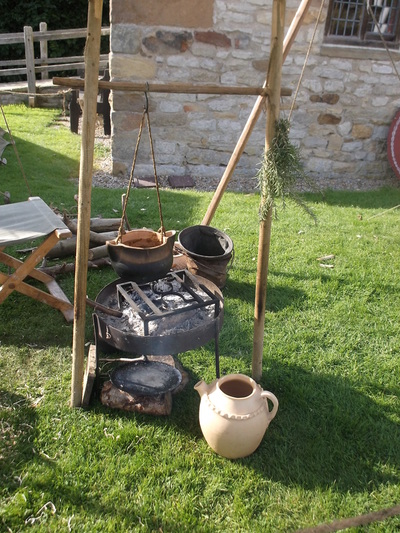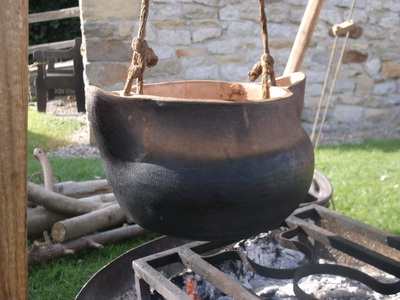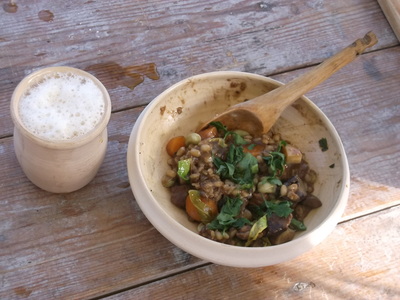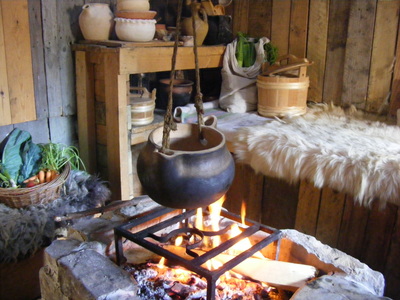HISTORICAL POTTERY
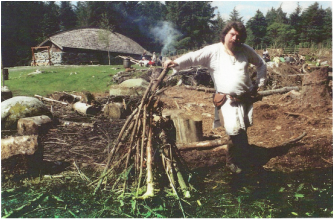 Building a clamp kiln at Avaldsnes Viking Farm, Norway
Building a clamp kiln at Avaldsnes Viking Farm, Norway
I have been a historical re-enactor for over 25 years (and here is a picture of me about 25 years ago to prove it!). I have specialised in the Late Romano-British and Early Medieval period, taking part in Late Roman, Saxon and Viking events throughout the UK and in Norway.
During this time, I have researched and experimented with the pottery styles and production techniques from the Late Romano-British and Early Medieval periods, producing both museum pieces and usable re-enactment pottery for Late Roman, Saxon and Viking re-enactors and groups.
I use a variety of clays to try and match as closely as possible the type used originally to reflect colour, texture and inclusions. I have also experimented with grass tempering (horse poo!) and dug, prepared and used local clays.
The pottery I produce for re-enactment is tough, hardwearing and can be used on a daily basis. Individual pieces are either hand thrown, hand built or in some instances slip cast, they are then fired to a high temperature in a modern kiln. I use a food safe, lead free clear glaze on the interior of the pottery as I find this helps with keeping pieces clean and hygienic. (I remember once thoroughly washing an unglazed cooking pot, but after storage for several weeks it had grown a furry coat….).
Although firing in a modern kiln will mean the pottery does not show the blackened look of an authentic clamp kiln, cooking pots will soon take on this look once they have been used over an open fire a few times.
The pottery is all based on original pieces, however none is an exact copy.
During this time, I have researched and experimented with the pottery styles and production techniques from the Late Romano-British and Early Medieval periods, producing both museum pieces and usable re-enactment pottery for Late Roman, Saxon and Viking re-enactors and groups.
I use a variety of clays to try and match as closely as possible the type used originally to reflect colour, texture and inclusions. I have also experimented with grass tempering (horse poo!) and dug, prepared and used local clays.
The pottery I produce for re-enactment is tough, hardwearing and can be used on a daily basis. Individual pieces are either hand thrown, hand built or in some instances slip cast, they are then fired to a high temperature in a modern kiln. I use a food safe, lead free clear glaze on the interior of the pottery as I find this helps with keeping pieces clean and hygienic. (I remember once thoroughly washing an unglazed cooking pot, but after storage for several weeks it had grown a furry coat….).
Although firing in a modern kiln will mean the pottery does not show the blackened look of an authentic clamp kiln, cooking pots will soon take on this look once they have been used over an open fire a few times.
The pottery is all based on original pieces, however none is an exact copy.
